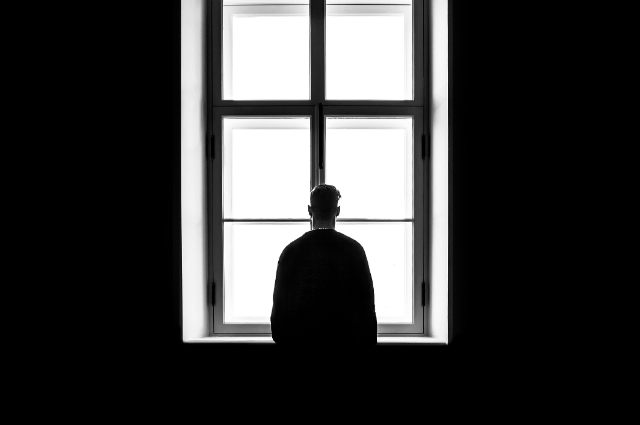
Photo by Nik Shuliahin on Unsplash
THE SPOTLIGHT OF THE CRIME
In recent years, India has witnessed a troubling rise in suicides among married men, often linked to allegations of matrimonial harassment and contentious alimony disputes. The tragic case of 34-year-old Bengaluru techie, Atul Subhash, has brought this issue into sharp focus, highlighting the severe emotional and psychological toll such situations can impose on men.
The Case of Atul Subhash
On December 9, 2024, Atul Subhash, a software engineer specializing in Artificial Intelligence, was found dead in his Bengaluru apartment. He left behind a 24-page suicide note and a 90-minute video, detailing his harrowing experiences. In these, Subhash accused his estranged wife, Nikita Singhania, and her family of relentless harassment and extortion. He alleged that they demanded a ₹3 crore settlement and denied him access to their four-year-old son unless he complied with their financial demands.
Subhash's note also criticized the legal system, expressing frustration over multiple accusations against him, including domestic violence and dowry harassment. He felt the judiciary was biased, particularly concerning laws like Section 498A of the Indian Penal Code, which addresses cruelty by husbands. His meticulous preparations before his death, including a checklist outlining his final days, underscore the depth of his despair.
A Broader Issue
Subhash's case is not isolated. Data from the National Crime Records Bureau (NCRB) indicates that in 2021, out of 1,64,033 suicide deaths in India, 81,063 were married men, compared to 28,680 married women. Family problems and marriage-related issues were significant contributors, accounting for 33.2% and 4.8% of male suicides, respectively.
These statistics suggest a pressing need to address the mental health challenges and societal pressures faced by men in matrimonial disputes. The stigma associated with men expressing vulnerability, combined with potential biases in legal proceedings, can lead to feelings of helplessness and despair.
Legal and Societal Implications
The aftermath of Subhash's death has ignited debates about the potential misuse of protective laws and the need for a more balanced approach in matrimonial disputes. While laws like Section 498A are crucial for safeguarding women against domestic violence, there are concerns about their misuse, leading to unwarranted harassment of husbands.
Advocates are calling for legal reforms to ensure that while genuine victims receive protection, there are also safeguards against the exploitation of these laws. This includes the establishment of support systems for men facing matrimonial harassment and a re-examination of alimony and custody laws to promote fairness and equity.
EXAMINATION OF ALIMONY LAWS IN INDIA

Photo by Afif Ramdhasuma on Unsplash
In India, alimony—also known as maintenance—is designed to provide financial support to a spouse who may lack sufficient means post-divorce. The legal framework governing alimony is multifaceted, reflecting the country's diverse religious communities, each with its own personal laws.
1. Hindu Marriage Act, 1955
Applicable to Hindus, Buddhists, Jains, and Sikhs, the Hindu Marriage Act encompasses provisions for alimony:
- Section 24: This section allows either spouse to request interim maintenance during ongoing divorce proceedings. The court evaluates the applicant's income and financial status to determine a reasonable amount for support until the case concludes.
- Section 25: Post-divorce, either party can seek permanent alimony. The court considers factors such as the duration of the marriage, the parties' ages, health conditions, income, assets, and the standard of living established during the marriage to decide the alimony amount and its duration.
2. Indian Divorce Act, 1869
Governing Christians in India, this Act provides:
- Section 36: A wife can claim interim maintenance during divorce proceedings. The court assesses the husband's income and other relevant factors to determine the support amount.
- Section 37: Post-divorce, the court can order the husband to pay alimony to the wife, considering factors like the wife's financial needs, the husband's ability to pay, and the conduct of both parties.
3. Muslim Personal Law
Under Islamic law, maintenance is provided during the 'Iddat' period—a waiting period following divorce. The husband is obligated to support the wife during this time. Additionally, the wife is entitled to receive 'Mahr' (dower), a mandatory payment from the husband at the time of marriage.
4. Parsi Marriage and Divorce Act, 1936
For Parsis, the Act includes:
- Section 39: Provision for interim maintenance during divorce proceedings.
- Section 40: Post-divorce, either spouse can seek permanent alimony, with the court considering factors such as the parties' financial situations, the marriage duration, and their conduct.
5. Special Marriage Act, 1954
This Act applies to inter-religious marriages and those not solemnized under personal laws:
- Section 36: Allows for interim maintenance during divorce proceedings.
- Section 37: Provides for permanent alimony post-divorce, with considerations similar to those in other personal laws.
Principles Ensuring Fairness
Indian courts aim to ensure that alimony provisions are just and equitable. Key considerations include:
- Financial Disparity: Bridging the income gap between spouses to prevent undue hardship.
- Standard of Living: Maintaining a lifestyle comparable to that enjoyed during the marriage.
- Duration of Marriage: Longer marriages may result in higher alimony due to deeper financial and emotional interdependence.
- Contributions to the Marriage: Recognizing both financial contributions and non-economic roles, such as homemaking and child-rearing.
- Age and Health: Older or ill spouses may receive higher alimony due to limited earning potential.
It's important to note that alimony is not automatic; the claimant must demonstrate a need for financial support, and the court retains discretion in determining the amount and duration based on the unique circumstances of each case.
ALLEGATIONS OF MISUSE OF LEGAL PROVISIONS & SUPREME COURT GUIDELINES

Section 498A of the Indian Penal Code (IPC) was enacted in 1983 to protect married women from cruelty by their husbands and in-laws, addressing issues like dowry harassment and domestic violence. However, over the years, concerns have emerged regarding its potential misuse.
Critics argue that Section 498A, designed as a shield for vulnerable women, has sometimes been wielded as a weapon against husbands and their families. The law's stringent provisions, which allow for immediate arrest without a warrant, have led to instances where individuals allege false accusations to settle personal scores or exert pressure in matrimonial disputes.
The Supreme Court of India has acknowledged these concerns. In a recent judgment, the Court emphasized the need for judicial caution, noting that while the law aims to protect women, its misuse can lead to unwarranted harassment of the accused.
The Court stated that "making vague and generalized allegations during matrimonial conflicts, if not scrutinized, will lead to the misuse of legal processes and an encouragement for use of arm-twisting tactics by a wife and/or her family."
To address these issues, the judiciary has laid down guidelines to prevent misuse.
For instance, in the case of *Arnesh Kumar v. State of Bihar*, the Supreme Court directed that arrests under Section 498A should not be automatic and mandated that police officers conduct a preliminary inquiry before making an arrest. This move aims to balance the protection of genuine victims while safeguarding the rights of the accused.
Despite these measures, debates continue about the law's application. Advocates for women's rights caution against diluting the provisions, emphasizing that genuine victims still rely on Section 498A for protection. Conversely, men's rights groups highlight cases where false allegations have led to social stigma, financial loss, and mental trauma for the accused and their families.
The challenge lies in ensuring that Section 498A serves its original purpose of safeguarding women from genuine cruelty while implementing safeguards to prevent its misuse. This necessitates continuous judicial oversight, proper implementation of guidelines, and perhaps legislative amendments to strike a balance between protection and prevention of abuse.
Supreme Court's Recent Guidelines on Alimony Determination:
In a landmark ruling, the Supreme Court of India has established an eight-point framework to guide courts in determining alimony in divorce cases. This initiative seeks to bring clarity and consistency to alimony awards, addressing concerns about fairness and potential misuse.
The eight key factors outlined by the Court are:
- Social and Economic Status: Assessing the societal and financial standing of both parties to ensure that the alimony reflects their lifestyles and economic conditions.
- Age and Health: Considering the age and health of both spouses, recognizing that these factors can influence earning capacity and financial needs.
- Educational Qualifications: Evaluating the educational backgrounds to determine the potential employability and earning prospects of both individuals.
- Duration of Marriage: Taking into account the length of the marriage, with longer unions potentially warranting higher alimony due to greater interdependence.
- Contributions to the Marriage: Recognizing both financial contributions and non-financial roles, such as homemaking and child-rearing, which have economic value.
- Income and Assets: Reviewing the income, properties, and other assets of both parties to ensure a fair distribution of resources.
- Custodial Responsibilities: Considering who will have custody of children, as custodial parents may have increased financial burdens.
- Reasonable Needs: Assessing the reasonable needs of the dependent spouse to maintain a standard of living comparable to that during the marriage.
The Court emphasized that these guidelines are not exhaustive but serve as a structured approach to ensure equitable outcomes in alimony determinations. The aim is to balance the needs of the dependent spouse with the financial capabilities of the paying spouse, preventing undue hardship on either party.
This framework reflects the judiciary's commitment to evolving family law in India, ensuring that alimony awards are just, transparent, and reflective of contemporary societal norms. By providing clear criteria, the Supreme Court seeks to reduce ambiguity in alimony cases, promoting fairness and consistency across the judicial system.
PSYCHOLOGICAL AND SOCIAL IMPACT ON MEN

In India, the dissolution of marriage often brings with it a cascade of emotional and psychological challenges for men, particularly when entangled in contentious alimony disputes. The societal expectation for men to be stoic providers exacerbates these challenges, leading many to internalize their struggles.
This internalization can manifest as depression, anxiety, and a profound sense of isolation. The financial strain of substantial alimony payments further compounds these issues, potentially resulting in feelings of emasculation and diminished self-worth. The societal stigma surrounding male vulnerability discourages many from seeking mental health support, creating a perilous cycle of suppressed emotions and escalating psychological distress.
Case Studies Illustrating the Crisis;
1. The tragic case of Atul Subhash,
A Bengaluru-based tech professional, underscores the severe personal toll of alimony-related harassment. In December 2024, Subhash died by suicide, leaving behind a detailed note and video alleging relentless harassment and extortion by his estranged wife and her family.
He described being coerced into frequent, costly travels between Bengaluru and Uttar Pradesh for court proceedings, which drained him both financially and emotionally. His family contends that the legal system's biases and procedural delays exacerbated his despair, ultimately leading to his untimely death.
2. In another heart-wrenching incident from January 2025, a man named Peter from Hubballi
Ended his life, citing severe harassment from his wife, who allegedly demanded ₹2 million in alimony. Peter's suicide note detailed the emotional abuse and financial pressures he faced, highlighting the profound personal impact of such disputes. citeturn0search11
These cases shed light on the systemic issues within the legal framework and societal attitudes that often leave men feeling trapped and hopeless in the face of marital discord and financial demands.
The psychological and social ramifications of contentious alimony disputes on men in India are profound and multifaceted. Addressing this issue necessitates a comprehensive approach that includes legal reforms to ensure equitable treatment, societal shifts to destigmatize male vulnerability, and the establishment of robust support systems to assist men navigating the complexities of marital dissolution.
CRITIQUE OF JUDICIAL PROCESSES AND DELAYS AND ADVOCACY FOR REFORMS
The Indian judicial system, often lauded for its comprehensive legal framework, faces significant challenges due to prolonged legal battles and systemic inefficiencies. These delays are particularly pronounced in matrimonial disputes, where the emotional and financial toll on individuals can be devastating.
- One of the primary causes of these delays is the overwhelming backlog of cases. As of recent reports, over 4 crore cases are pending across various courts in India, leading to prolonged litigation periods. This backlog not only clogs the judicial pipeline but also diminishes the litigants' faith in the justice delivery system.
In matrimonial disputes, these delays can exacerbate emotional distress. Prolonged court proceedings often mean extended periods of uncertainty for both parties, affecting their mental health and social well-being. Financial strain is another significant consequence, as legal battles can be expensive due to multiple court appearances, lawyer fees, and other associated costs.
- Furthermore, the inefficiencies within the system, such as the shortage of judges and inadequate infrastructure, contribute to these delays. India has about 21 judges per million people, compared to over 50 in many developed nations, leading to an overburdened judiciary.
These systemic issues not only prolong the resolution of disputes but also deter individuals from seeking legal recourse, fearing the protracted and arduous process. The adage "justice delayed is justice denied" aptly encapsulates the plight of many embroiled in prolonged matrimonial litigation.
Advocacy for Legal Reforms:
To address these challenges, there is an urgent need for balanced legal reforms that protect genuine victims of matrimonial cruelty while preventing the misuse of laws against innocent parties.
Section 498A of the Indian Penal Code, enacted to protect women from cruelty, has been a subject of debate due to its potential for misuse. While it serves as a crucial safeguard for many, instances have emerged where the law has been allegedly weaponized for personal vendettas, leading to wrongful implications of husbands and their families.
Legal experts suggest that reforms should focus on ensuring that the law serves its intended purpose without causing undue harm. This includes implementing stricter scrutiny mechanisms to differentiate between genuine and false cases, thereby preventing the harassment of innocent individuals.
Additionally, there is a pressing need to address the systemic inefficiencies contributing to judicial delays. This can be achieved by increasing the number of judges, improving infrastructure, and leveraging technology for better case management. Such reforms would not only expedite the resolution of matrimonial disputes but also restore faith in the judicial system.
SUPPORT SYSTEMS FOR AFFECTED MEN
In the intricate landscape of matrimonial disputes in India, men often find themselves confronting significant emotional and legal challenges. The establishment of robust support systems is crucial to assist these individuals in navigating the complexities they face.
- Counseling Services: A Pillar of Emotional Support
Counseling provides a safe space for men to express their feelings, manage stress, and develop coping strategies. Professional therapists can help individuals process their experiences, mitigate feelings of isolation, and address mental health concerns that may arise during matrimonial conflicts. Access to mental health resources tailored to men's needs is essential, as counseling offers practical guidance and support for managing stress, relationship issues, and other mental health challenges.
- Support Groups: Fostering Community and Shared Understanding
Participating in support groups allows men to connect with others facing similar challenges, fostering a sense of community and shared understanding. These groups provide a platform to share experiences, offer mutual support, and discuss coping mechanisms. Organizations like the Men Welfare Trust conduct weekly support group meetings for men and their families who have been victimized by the misuse of gender-biased laws or are facing hardships in their relationships.
- Legal Aid: Navigating the Judicial System
Access to legal aid is vital for men to understand their rights and effectively navigate the judicial system. Non-profit organizations such as the Men Welfare Trust offer helplines and support for men in distress, providing guidance on legal matters related to matrimonial disputes. citeturn0search2 Additionally, the National Council for Men Affairs advocates for men's rights, focusing on issues like gender discrimination and legal reform, and provides support for men facing discrimination and harassment.
By strengthening these support systems, society can better address the challenges men face in matrimonial disputes, promoting mental well-being and ensuring access to necessary resources during times of crisis.
THE PATH FORWARD: ENSURING JUSTICE AND FAIRNESS
The increasing reports of husbands facing harassment through the misuse of alimony laws and subsequent tragic outcomes necessitate a comprehensive approach to ensure justice and fairness. Addressing this pressing issue requires actionable steps from the judiciary, legislature, and society at large.
Judiciary: Upholding Equitable Justice
- Strict Scrutiny of Alimony Claims: Courts should meticulously assess alimony claims, considering the financial status, conduct, and needs of both parties to prevent unjust demands. The Supreme Court's eight-point framework for determining alimony serves as a guiding tool in this regard.
- Penalizing False Allegations: Implement stringent penalties for individuals found guilty of filing false cases under Section 498A or making fraudulent alimony claims. This measure would deter misuse and uphold the integrity of the legal system.
- Expedited Case Resolution: Establish fast-track courts for matrimonial disputes to reduce prolonged legal battles, which often exacerbate mental and financial stress on the involved parties.
Legislature: Enacting Balanced Reforms
- Introduction of Gender-Neutral Laws: Revise existing matrimonial laws to be gender-neutral, ensuring protection for all individuals, regardless of gender, against harassment and misuse.
- Clear Guidelines for Alimony Determination: Legislate comprehensive criteria for alimony assessments, taking into account factors such as the duration of marriage, contributions of both spouses, and future earning potential, to ensure fair outcomes.
- Regular Review of Matrimonial Laws: Establish a committee to periodically review matrimonial laws and recommend necessary amendments in response to evolving societal dynamics and emerging challenges.
Society: Fostering Awareness and Support
- Public Awareness Campaigns: Launch initiatives to educate the public about the legal rights of all individuals in matrimonial contexts, emphasizing the consequences of misusing legal provisions.
- Support Systems for Affected Individuals: Develop accessible support networks, including counseling services and legal aid, for individuals facing harassment or false allegations in matrimonial disputes. Organizations like the Men Welfare Trust offer helplines and support groups for men in distress.
- Encouraging Mediation and Counseling: Promote mediation and counseling as primary approaches to resolving matrimonial disputes, aiming for amicable settlements and reducing the adversarial nature of legal proceedings.
- Community Engagement: Involve community leaders and organizations in addressing the stigma associated with being a victim of matrimonial harassment, fostering a more supportive environment for affected individuals.
By implementing these measures, we can work towards a more balanced and just system that protects the rights and well-being of all individuals involved in matrimonial disputes.
CONCLUSION
The tragic instances of husbands taking their own lives due to matrimonial harassment and overwhelming alimony demands call for immediate attention. It is imperative to strike a balance in the legal system that safeguards the rights and well-being of all individuals, ensuring that justice is both served and perceived to be served.
. . .
REFERENCES:
- Men Welfare Trust Official Website: https://www.menwelfare.in
- Supreme Court's 8-Point Formula for Alimony: https://kanoon360.com/blog
- Men Welfare Trust - About Us: https://www.menwelfare.in
- Supreme Court Issues 8-Point Guidelines for Determining Alimony: https://thestorymug.com
- Men Welfare Trust - Weekly Meetings: https://www.menwelfare.in/weekly-meetings/
- Supreme Court Highlights 8 Crucial Factors in Deciding
Alimony: https://delhidivorcelawyers.com - Men Welfare Trust - FAQs: https://www.menwelfare.in/faqs/
- Supreme Court Issues 8-Point Guidelines Amid Techie Suicide Case: https://english.varthabharati.in
- Men Welfare Trust - Resources: https://www.menwelfare.in/category/resources/
- Supreme Court Introduces Eight-Point Alimony Framework: https://www.thelawadvice.com
